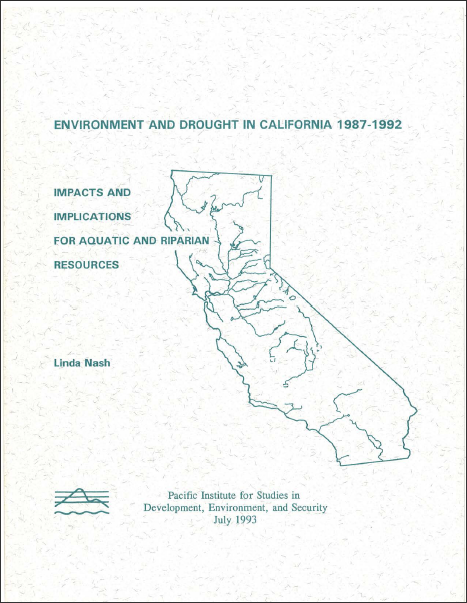By Amanda Pebler, Communications Intern
July 20, 2014
“Future droughts are likely to cause still more severe impacts to California’s environmental resources.” -1987
“The drought is not over. Without doubt, another dry year would result in much more severe situation than California has experienced thus far.” -1991
In the midst of the California drought and the hot summer months ahead, more data and public information are needed about what to expect and what are our options for action. The Pacific Institute works to give the public and policymakers the ability to access the latest data on the California drought and have been doing so for over 25 years. Recently, two past reports from the Pacific Institute regarding the California drought that occurred in the late 20th century have been released online. Even then, the drought warned that future impacts would be more severe than ever before. For those who have wondered how the current drought compares to those of the past, these are fantastic resources that give insight into previous drought conditions and how California responded.
 The first, Environment and Drought in California (1987-1992), provides information on the impacts of the drought on aquatic and riparian resources. It identifies the key issues that were expected to affect these aquatic systems by ecosystem and area. The report also describes and analyzes the drought mitigation efforts as well as the drought planning and policy strategies that had been implemented in response to the drought.
The first, Environment and Drought in California (1987-1992), provides information on the impacts of the drought on aquatic and riparian resources. It identifies the key issues that were expected to affect these aquatic systems by ecosystem and area. The report also describes and analyzes the drought mitigation efforts as well as the drought planning and policy strategies that had been implemented in response to the drought.
The second report, The Societal and Environmental Costs of the Continuing California Drought (1991), gives an overview of the economic and environmental costs of the drought. It reviews past climatic extremes and uses them to highlight high-risk economic sectors which may be greatly impacted by drought. This study also suggests that there are costs that are not easily quantified using traditional economic indicators; these costs include impacts to fish, wildlife, forests, and natural ecosystems.
Overall, it finds that the greatest impacts are those facing our environment, many of which may be irreversible. (In addition, the Pacific Institute also studied the more recent drought in the report Impacts of the California Drought 2007-2009, assessing the state’s agricultural, energy, and environmental sectors to evaluate actual consequences of the complicated and serious impacts from the drought.)
During this current drought, we need greater public education about drought and its impacts in order to gain a broader perspective about what actions the state and individuals could take to reduce demand and increase supply. And there is insight to be gained from examining how far we have come over the last 25 years. We must see beyond the immediate, learn from the past, and look toward the future.
For more resources regarding the California drought, visit www.californiadrought.org.
